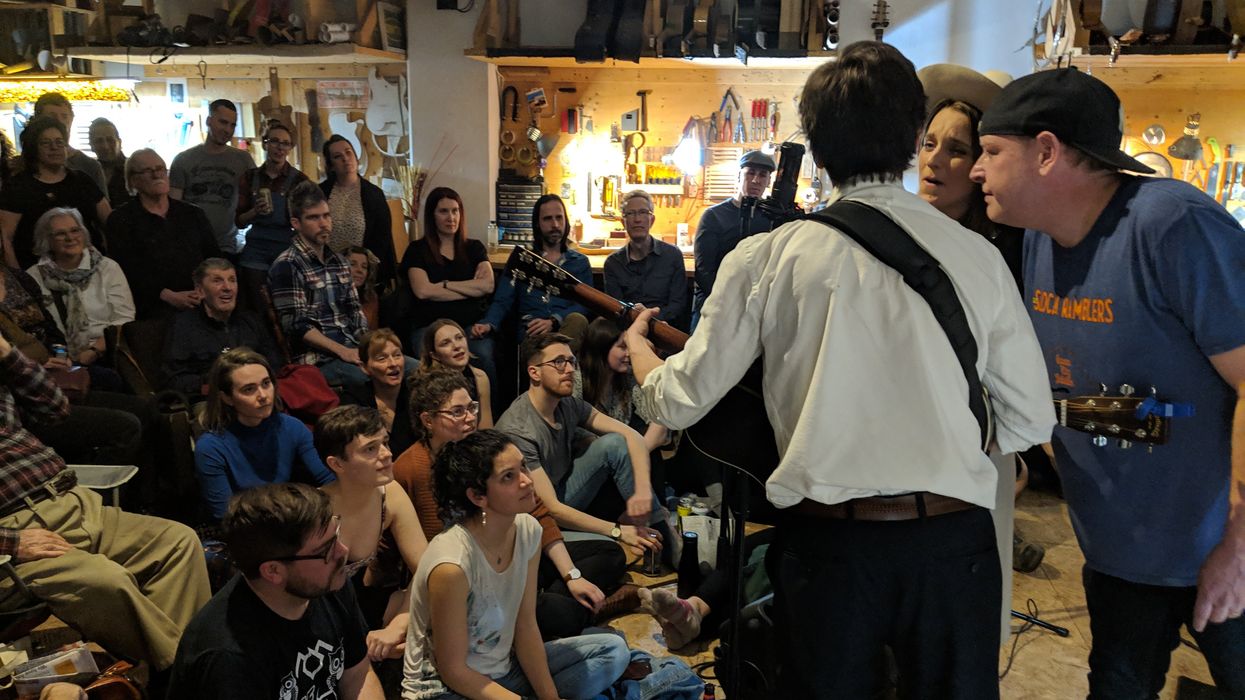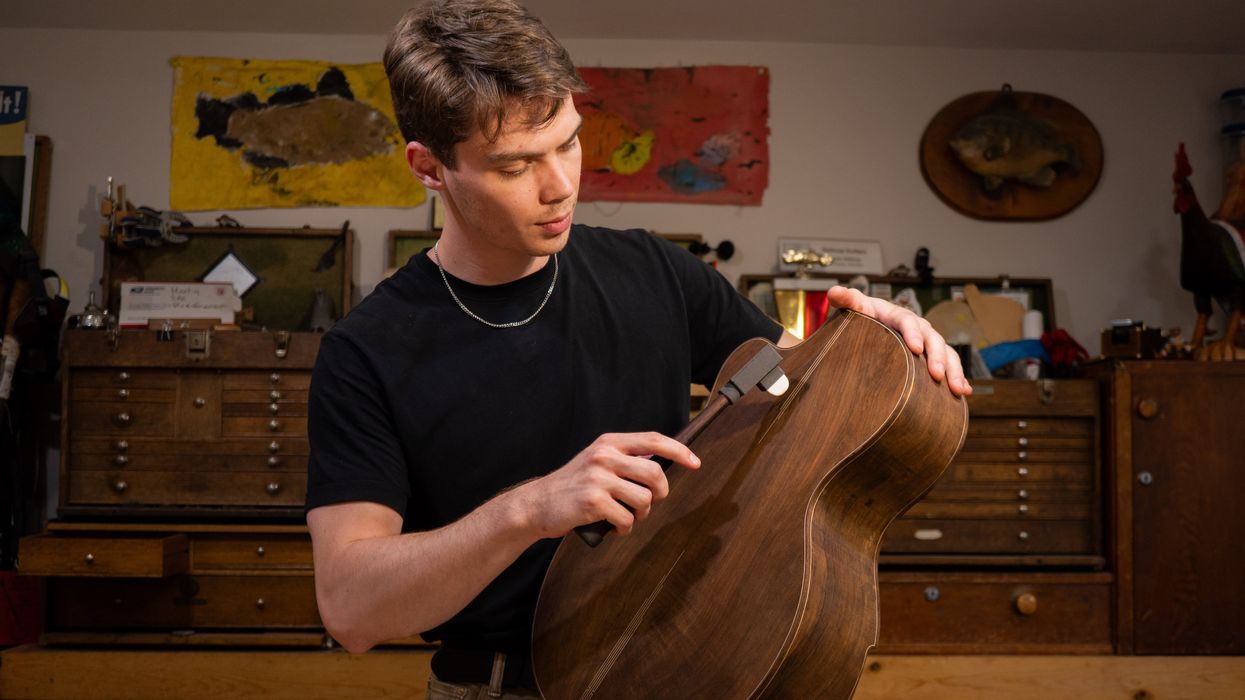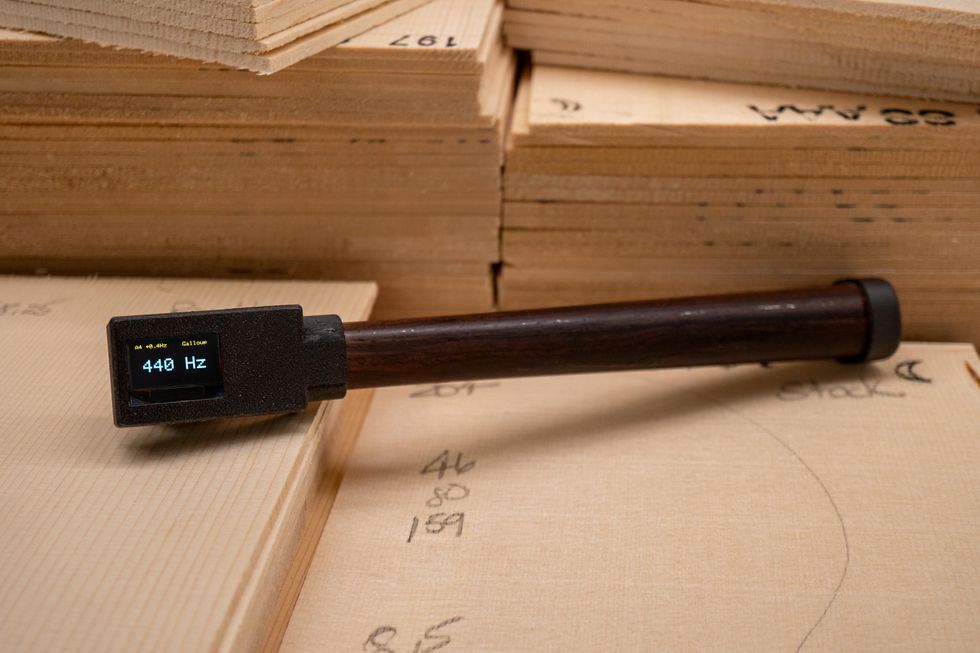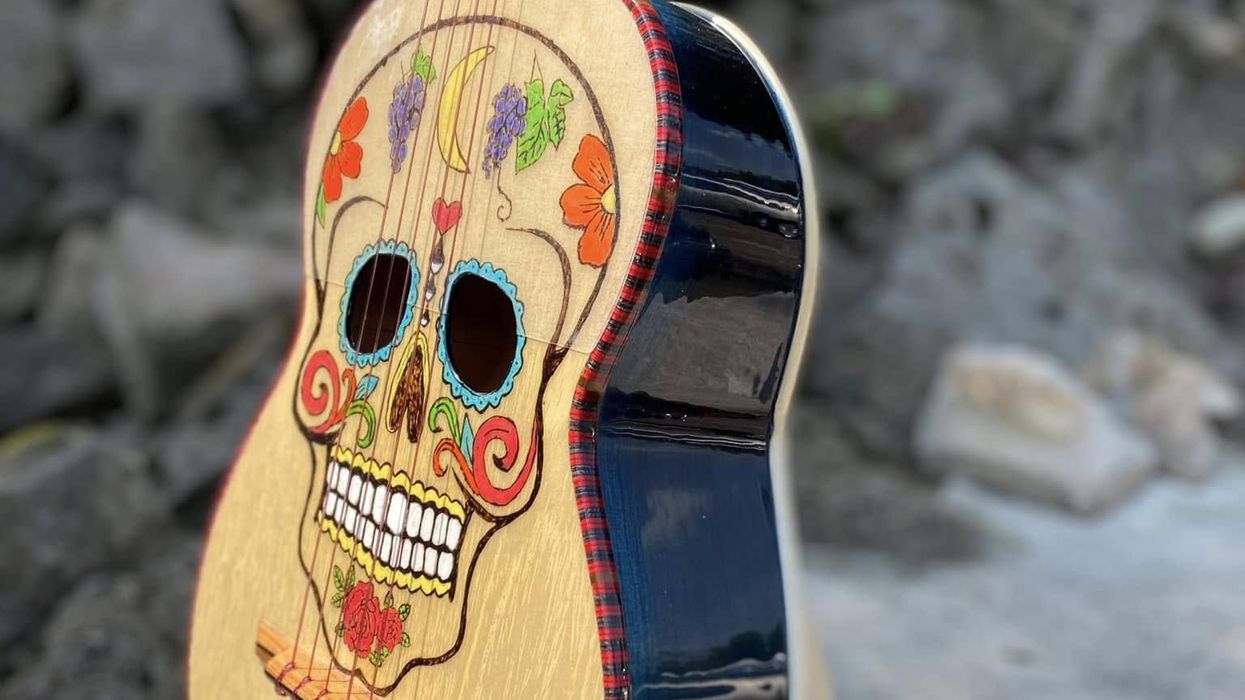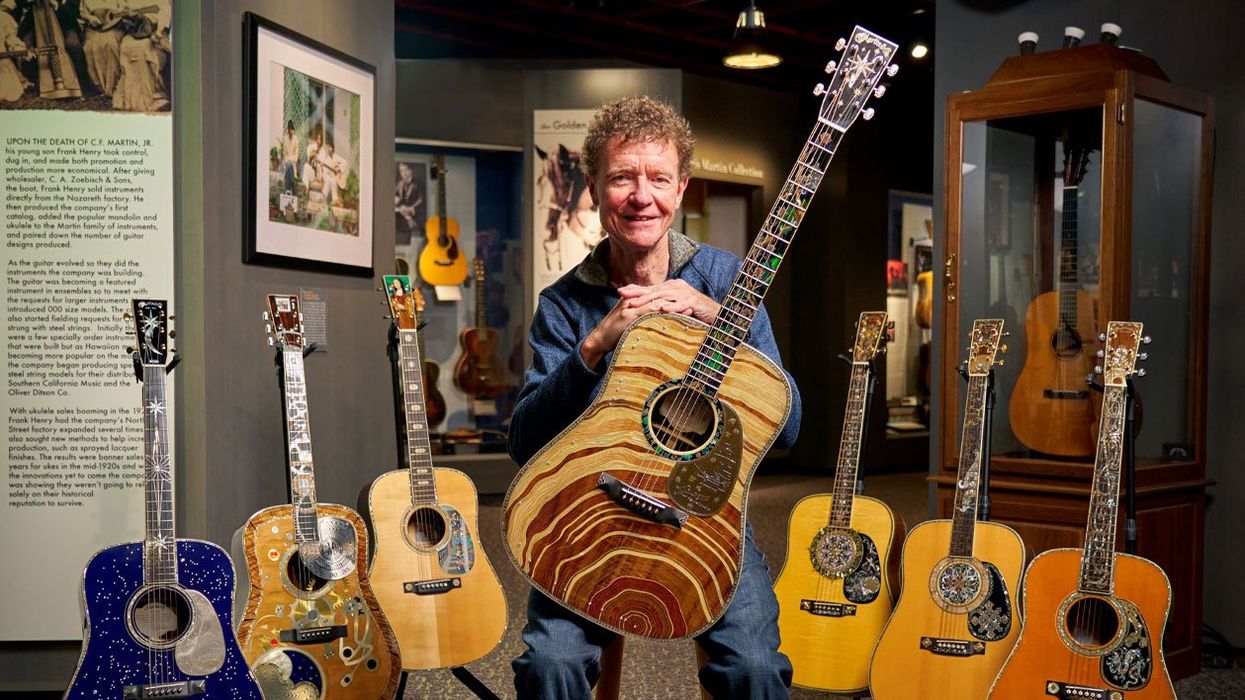This column serves as a sequel to my partner
Jeff Huss’ most recent contribution,
“Tales of Wood Discovery” [September 2010 PG]. Jeff’s piece was about the
surprises we sometimes encounter when
searching for unusual wood to build guitars.
Just after that story ran, we had one
of the most interesting finds ever. I’ll share
it with you here before he gets the chance!
The Mystery Unfolds
Betsy Baten—a very nice lady who owns
one of our FS models—recently contacted
us about a tree that was cut down where
she works. Over the many years that the
tree had been there, it had become diseased
and hollow. It was threatening the
nearby house, so it had to come down.
But this was no ordinary tree. You see,
Betsy is a tour guide at Monticello, the
home of Founding Father and former
president Thomas Jefferson, and the tree
in question had grown just outside ol’ TJ’s
bedroom window.
Wait, it gets better. According to the
Thomas Jefferson Foundation, the organization
that runs the mansion, Jefferson
planted the tree himself. Betsy asked if we
would be interested in some wood from
the tree for guitar making. Needless to
say, we replied “yes” as fast as we could.
The tree was a tulip poplar, and it was
around 15 feet in diameter. Jefferson was
an avid botanist, and the foundation has
pinpointed entries from his journal noting
that a tree of this species was planted
in that location. The foundation also had
photos from around 1870 (the earliest
known photos of Monticello) that showed
the tree as being very large then. So this
anecdotal evidence suggests that the
Founding Father had indeed planted the
tree. Wow!
Trekking for Timber
So Jeff, my wife Kimberly, and I struck out
for the 30-minute drive across the Blue
Ridge to Monticello. Our first stop of the
day was to meet with the lady in charge
of deciding who received lumber from the
tree. After signing an agreement to share
proceeds from the sale of the guitars with
the foundation, we went out to her car
to look at a couple of boards. She pulled
out two. They were wide and clear, but
looked pretty ordinary. They looked like
poplar, though they were the hardest and
densest we’d ever seen.
“Oh well,” we thought, “it will make a killer
guitar—if not very pretty.” And, after all,
Thomas Jefferson planted the tree. After
getting a house tour from Betsy—including
to the upstairs dome, which is not part
of the public tour—we left Monticello to
go to a wood turner’s shop at the eastern
foot of the mountain. He had procured
some wood from this special tree and
was making bowls from it. When we got
there and saw what he’d crafted, we were
more interested than ever. The burls he
had used were exploding with color. There
were reds and browns and spalting—all
kinds of character in the wood.
He gave us a large piece that we thought
might produce some quartersawn sets, and
then suggested we call the man who runs
the architectural woodworking operation
back at Monticello. Apparently, there was
more of the wood located at a farm that
was part of the original Jefferson property
and is still owned by the foundation.
So, it was back to Charlottesville and
back up the mountain to meet the second
gentleman. He took us down to the farm,
and there we found what we were looking
for—big, wide, quartered billets of some
of the most striking, colorful wood we had
seen yet. We were pretty jazzed about this
stuff. As a woodchuck and history buff, I
couldn’t wait to get it back to the shop.
When we got the wood to the milling
room at H&D, we started the re-sawing
process. Inside the billets was the incredible
wood we were hoping would be there.
Needless to say, the instruments we build
from this tree will be special in many ways.
A Reflective Moment
On the way back home, I felt pretty lucky
to be in this business. I don’t always feel
this way. What we do is hard sometimes,
and these tough economic times haven’t
made it any easier. But days like this make
you feel pretty good about being a luthier.
What other circumstance would put an
old country boy like me in a position to
work with such a historical tree? I couldn’t
ask for a better way to spend a beautiful
fall day than with my wife and my friend
touring Monticello and looking for special
guitar wood.
Mark Dalton
Mark Dalton is a founding partner of Huss & Dalton Guitar Company. When not building guitars, Mark and his wife, Kimberly, tend to the draft horses and mules that inhabit their farm in the Piedmont region of Virginia.




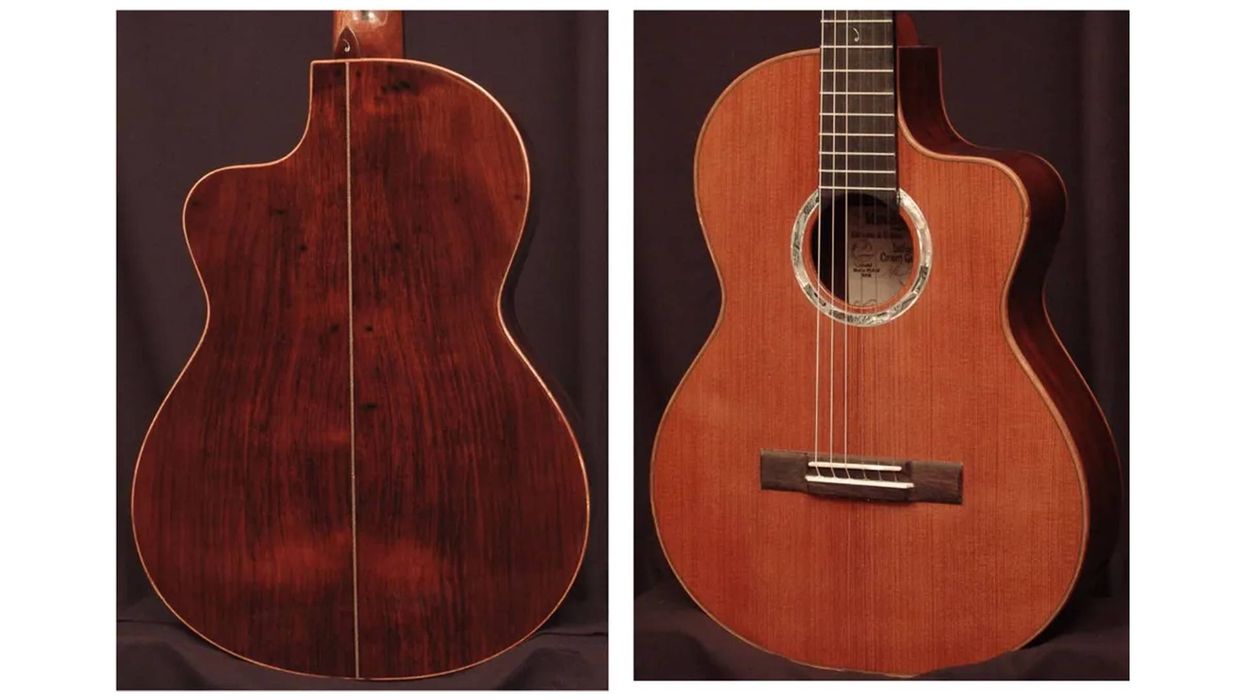




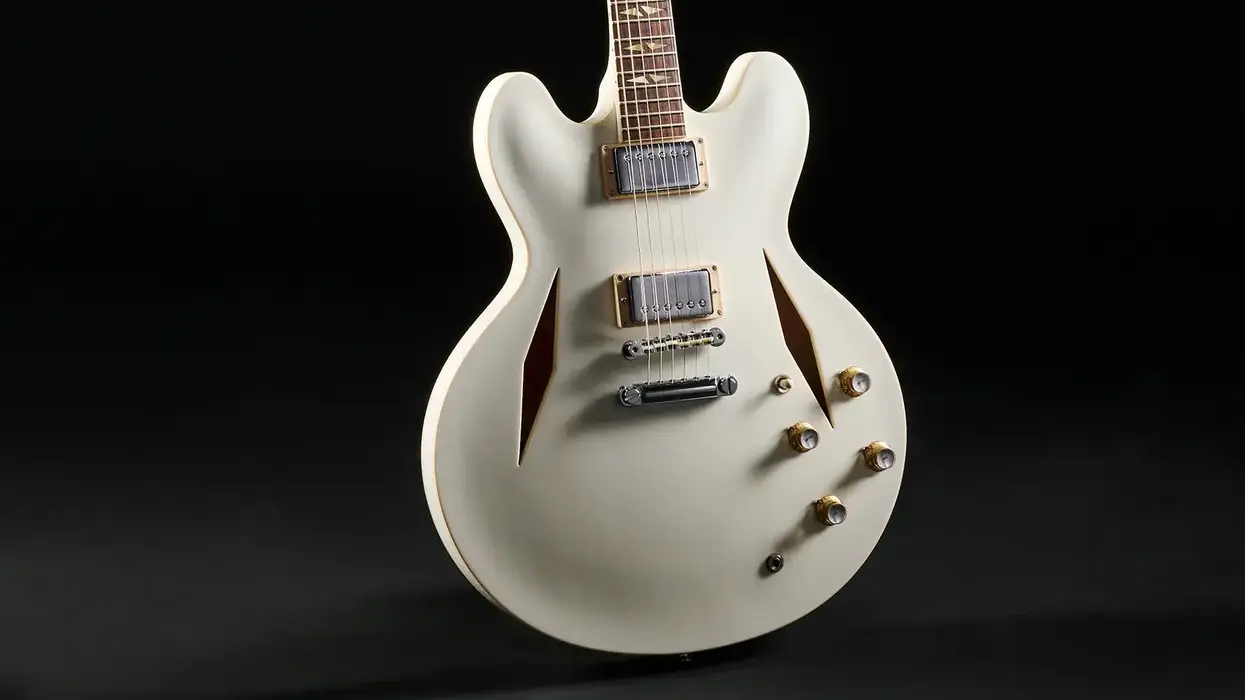
![Rig Rundown: AFI [2025]](https://www.premierguitar.com/media-library/youtube.jpg?id=62064741&width=1245&height=700&quality=70&coordinates=0%2C0%2C0%2C0)
